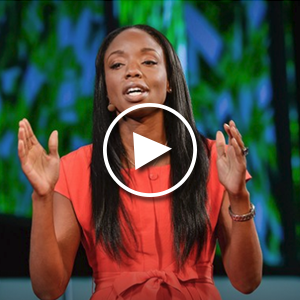Resources for learning about anxiety
Lisa Feldman Barrett on how we make emotions
Here is a powerful TED talk from Lisa Feldman Barrett. She shows how a predictive brain constructs emotions. She shares the results of her exhaustive research that shows we have more control over our emotions than we think.
The ‘constructed emotion’ model is a central theme in Anxiety Is Really Strange. We do not have innate emotions circuits and behaviours, we need concepts from our environment and history to help us make sense of what we feel.
Learning how to feel
What is an emotion? How do we feel?
Answering these questions was the inspiration for Anxiety Is Really Strange.
I am bodyworker, that is an important identity for me. I have been fortunate to train in many modalities: chiropractic, shiatsu, craniosacral therapy and TRE (Trauma Releasing Exercises). Also lots of yoga, meditation, skiing and more recently running. I am deeply curious about how minds and bodies interact. I am passionate about working through the body to promote health, not just physical health but emotional and mental health as well. I do not think these things are ever separate.
Show More
Helping people with anxiety has traditionally been seen as the territory of mental health professionals. Anxiety is most commonly framed as a psychological problem. My clinical experience for over 20 years has been that by safely connecting to the body, people become less anxious. Anxiety Is Really Strange is an attempt to summarise my understanding of why embodiment is a key tool to slow down feelings of anxiety and panic.
Another trigger for the book was reading the work of Lisa Feldman Barrett (2017) on how emotions are made. Her ‘constructed emotion’ model, rooted in decades of research, pulls together lots of great neuroscience and philosophy. Reading Barrett gave me renewed confidence that the business of feeling, however tricky, is central to health.
Many people assume feeling our body is natural and easy. Its not. It takes a lot of practice and skill to connect to our body. We can easily slip into habits and fantasies when we perceive the inner world of sensations. Buddhist scholar Reggie Ray (2016) goes so far as to say: ‘In modern culture, all of us live in a state of disembodied abstraction’.
There is now lots of great science on the value of exploring feelings (Barrett 2017). The inability to consistently map the internal state of the body is linked to persistent pain, anxiety states and being stuck in trauma responses.
It is useful differentiate basic body phenomena – physiological shifts in chemicals, nervous system reflexes, muscular tension patterns, and, behaviours – from the complex processes of consciousness. Emotions, memories and thought all co-emerge, created by our flexible brains, as we extract meaning from body events. ‘There is physiology and then complexity’ Haines 2018.
In response to a stimulus our body gears up for action, often defaulting to simple protective reflexes such as fight-or-flight or freeze. Our brain attempts to quickly and efficiently predict what is happening. Feelings are a bridge between physical body properties and complex emotions. We use our past experiences to continually create memories, emotions and meaning from our internal feelings.
To successfully work with anxiety it is useful to become skilful at managing events in the body. For sure, we need to do simple things to ensure our resources are not overwhelmed – try to eat well, socialise, sleep and de-stress. But, we can also learn to reframe our responses to the protective reflexes that can hijack our functioning. This is best summed up by Viktor Frankl 1946:
‘Between stimulus and response there is a space. In that space is our power to choose our response. In our response lies our growth and our freedom.’
Feelings are important and are the foundation of knowing and perception. By learning how to feel we can self-regulate seemingly out of control processes in the body. Somethings feels right or, too often, feels way wrong. But, ultimately, it is only a feeling and we can choose our response. We can learn to not get lost and stuck in protective reflexes and generate a window of opportunity to come out of anxiety.
Steve Haines 6 Mar 2018
References
- Barrett LF (2017) How Emotions Are Made. The Secret Life of the Brain. London: Macmillan
- Frankl V (1946) Man’s Search For Meaning. 1985 edition, Pocket Books, Simon & Schuster Inc, New York.
- Haines S (2018) Anxiety Is Really Strange. Singing Dragon, JKP.
- Ray R (2016) Somatic Meditation: Rediscovering the Body as the Ground of the Spiritual Path www.dharmaocean.org http://bit.ly/2I9nTR8


